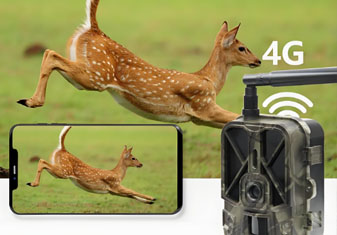Principi di imaging delle modalità a colori e a infrarossi dei dispositivi di visione notturna
La modalità a colori e la modalità a infrarossi degli occhiali per la visione notturna hanno ciascuno principi e metodi di lavoro unici. Di seguito è riportata un'analisi dettagliata di queste due modalità:
1. Il principio della visione notturna a colori goggles
The principio di funzionamento degli occhiali per la visione notturna a colori coinvolge più campi come l'ottica, l'elettronica e l'elaborazione delle immagini. I suoi passaggi principali includono:
Acquisizione ottica: cattura la luce debole, come la luce delle stelle, la luce della luna, ecc. Attraverso lenti speciali. Queste lenti hanno un'elevata sensibilità e un design ottico ottimizzato per catturare quanta più luce possibile in ambienti con scarsa illuminazione.

Image Miglioramento: I sensori (come i sensori CMOS o CCD) convertono la luce catturata in segnali elettrici. Successivamente, la tecnologia di elaborazione delle immagini viene utilizzata per migliorare questi segnali e migliorare la luminosità e la chiarezza dell'immagine.
Full-color Conversione: nella visione notturna a colori completa è un processo di conservazione delle informazioni degli occhiali. Attraverso algoritmi avanzati di elaborazione delle immagini, gli occhiali per la visione notturna sono in grado di presentare immagini vicine ai colori naturali, non solo le tradizionali immagini verdi o in bianco e nero.
Uscita del display: Infine, l'immagine a colori migliorata ed elaborata viene presentata all'utente attraverso uno schermo (come uno schermo OLED) o altri dispositivi di visualizzazione.
Il motivo per cui i dispositivi di visione notturna a colori possono presentare immagini a colori è dovuto principalmente ai loro sensori di colore altamente sensibili e alle complesse tecnologie di elaborazione delle immagini. Queste tecnologie possono acquisire informazioni sui colori in luce debole ed elaborarle e ottimizzarle attraverso algoritmi per presentare immagini a colori realistiche.

2. Il principio dei dispositivi di visione notturna a infrarossi devices
Infrared utilizza la tecnologia a infrarossi e la tecnologia di fotoconversione elettrica per ottenere la capacità di osservare obiettivi in ambienti bui. Il suo principio di funzionamento è il seguente:
Infrared rilevamento delle radiazioni: I dispositivi di visione notturna a infrarossi possono rilevare le radiazioni a infrarossi possono rilevare le radiazioni a infrarossi emesse stesse. Queste radiazioni sono al di fuori della luce visibile, ma possono essere rilevate dai rilevatori a infrarossi.
Conversione e amplificazione del segnale: il rilevatore a infrarossi converte la radiazione infrarossa ricevuta in segnali elettrici e li amplifica attraverso i circuiti. Questo passaggio migliora la forza del segnale in modo che possa essere chiaramente visualizzato sul visualizzatore.
Elaborazione delle immagini: sebbene i dispositivi di visione notturna a infrarossi presentino principalmente immagini a infrarossi (di solito immagini in scala di grigi), alcuni dispositivi avanzati di visione notturna a infrarossi sono anche dotati di tecnologia di elaborazione delle immagini per migliorare la chiarezza e il contrasto dell'immagine.
Uscita del display: L'immagine a infrarossi elaborata viene presentata all'utente attraverso il display. Poiché le immagini a infrarossi sono generate in base alla radiazione infrarossa emessa dagli oggetti, sono spesso in grado di rivelare oggetti o dettagli nascosti nel buio. I dispositivi di visione notturna a colori presentano immagini a colori catturando ed elaborando le informazioni sui colori in condizioni di luce debole; mentre i dispositivi di visione notturna a infrarossi utilizzano la radiazione infrarossa emessa dagli oggetti per generare immagini in scala di grigi. Entrambe le tecnologie forniscono importanti capacità di assistenza visiva di notte e in ambienti con scarsa illuminazione.






















